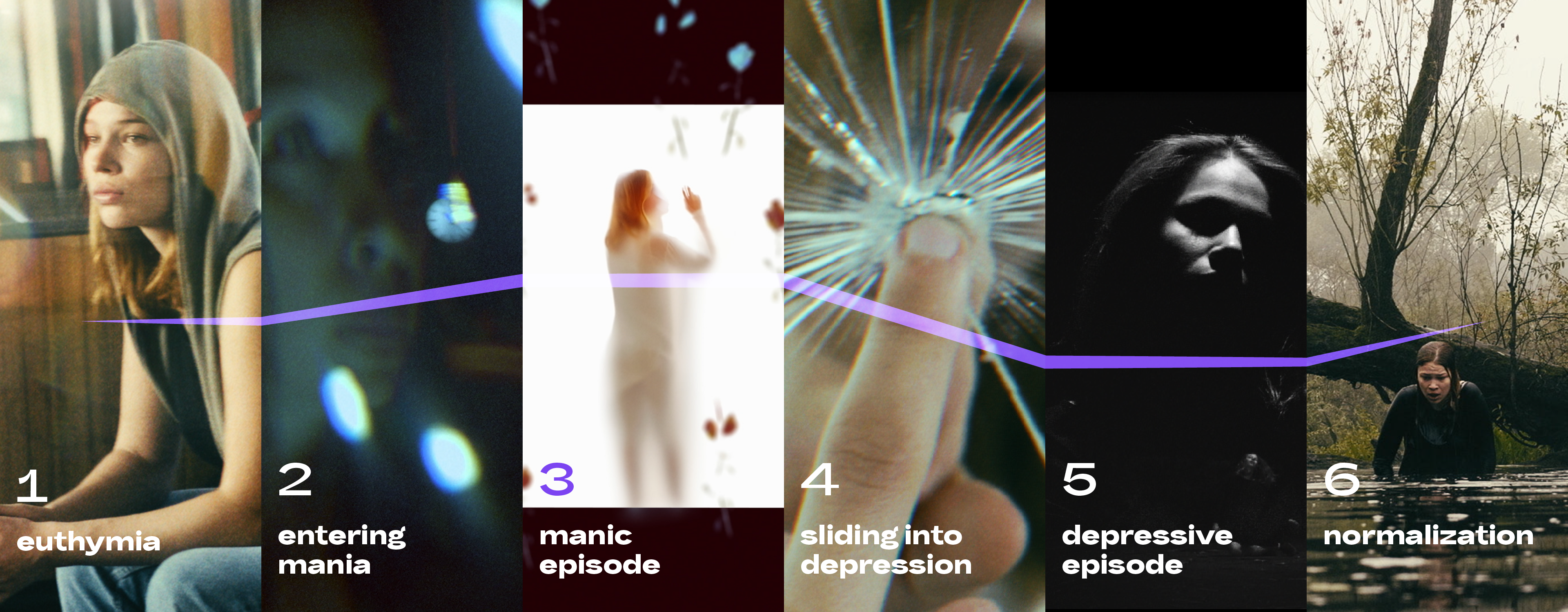Circular Insanity
— emotions of a bipolar person
[2018] How can something be made understandable that is beyond the average persons experience of reality? Circular Insanity seeks to answer this question by translating the states of bipolar disorder—euthymia, mania, and depression—into cinematic images. Without being purely explanatory, the film offers a glimpse into the inner world of those affected, making their emotions tangible through visuals and sound.
Rather than evoking pity, Circular Insanity aims to foster understanding. It presents the unsettling yet deeply relevant topic of mental health in a way that encourages empathy—shifting the focus from clinical symptoms to the human experience behind the disorder.
By promoting awareness through emotional connection, the film seeks to help break down stigmas surrounding bipolar disorder and neurodivergence as a whole.
category
experimental short film
Bachelor Media Design, 2018
supervisors
Prof. Herbert Moser
Prof. Dr. Holger Lund
awards
Best Creative Film — SHORTS 2019
Gold — Young Comprix 2023
background
During both manic and depressive episodes, individuals with bipolar disorder experience emotional extremes that are often unfamiliar to most people in their intensity and unpredictability. While the shifting between these states may seem comprehensible in theory, mental illnesses—still a taboo in today’s performance-driven society—are often silenced due to stigma and fear of otherness or dismissed as a mere weakness of character. A lack of understanding frequently leads to uninformed indifference toward those affected. Raising awareness is crucial, especially considering how many people live with this condition. In Germany alone, 2.8% of men and 3.1% of women are affected. [1]
A more open dialogue can foster empathy, break down prejudices, and support those who need it most.
method
Based on a standardized and simplified process of the disorder, six filmic chapters were defined.

For each of these six phases, visual worlds were developed on the basis of interviews with affected persons and material collected in literature research on the self-perception of affected persons, which were then combined into the overall audio-visual piece.
remarks
Circular Insanity does not aspire to scientifically explain what Bipolar Disorder is, nor does it aim to evoke pity for the people affected. The aim is to convey a feeling for this multifaceted illness, to allow the viewer to experience it through empathy, and to stimulate sustained reflection.